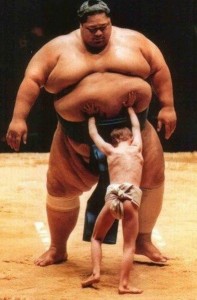#Quora: How do normal day traders manage to profit 200-300% annually and hedge funds are able to return only 20-40%?
How do normal day traders manage to profit 200-300% annually and hedge funds are able to return o… by Laurent Bernut
Answer by Laurent Bernut:
Day traders have one person to answer to: themselves, HF dudes don’t. Sticky Vs Fast money. It is not that they can generate good returns, it is that their clients will not allow them enough wiggle room. So, they are stuck in the month to month tyranny of positive returns.
HF is a fixed cost business
Keeping the lights on at any HF will cost You between half to one million USD per year. There are cheaper arrangements, but those funds are not institutional grade: pension guys will not even look at them. That is all before the principals can extract a dime out of it.
Now, contrary to popular beliefs, HF is a fixed cost business. You have bills to pay and for that You need to attract investors and raise your AUM. Performance does not pay the bills. Performance attract investors who pay the bills. Guys who waltz in with 10M thinking their performance will take care of the costs, stay at 10 forever
HFs are expensive underachievers.
In the mind of an investor, why would You invest with a HF when You can get cheaper better elsewhere? Yeah, yeah, yeah, the low correlation to the markets, downside protection, asset class diversification, i hear You, but who cares: 8 years of bull markets tend to dull people’s perception of risk and frankly. Every time the market had a hiccup, those wise dudes tumbled hard anyways. That is a fact, but that also has to do with the nature of the people they cater to.
Sticky Vs Fast money
HFs are stuck in a rut where they struggle to attract sticky, pension type money. Calpers pulled out of the HF game and many other endowments, pensions follow suite.
It takes roughly half to one million USD to keep the lights on. So, they market to fast money schmocks who put pressure on them. If You don’t perform 2–3 months in a row, or if You lose me 5%, i will cut You off. HF wise dudes don’t like those nervous investors, but they have no choice. Those Shylocks are the guys they have to perform cosmetic surgery with, as in lock their mouths to those guys’ money-makers, in order to one day reach institutional size.
What happens when You are not allowed to lose money? You don’t take risk. When you are up on the month, You take money off the table. When You are down, You cut risk. You never allow positions to fully develop.
At the heart of it are three things:
- Mismatch between assets and liabilities: HFs fund their LT strategies with short term funding. This cannot work. This is really the heart of the problem, from which everything flows
- Poor portfolio management skills: I started my career building portfolio management systems. Think of this as flying on instruments.If You don’t have good instruments to land at night on foggy days, game over. When i take a look at my HF buddies portfolio management systems, of course they struggle. I have seen only 2 which were investment grade in 15 years. Bottom line, these guys fly blind, no wonder they crash
- Short selling incompetence: selling futures as a hedge is for tourists. Most guys who come from the Long institutions think they are good at short selling. 2 years in, they give up on short selling. You don’t learn MMA by signing up for the UFC octagon, You train at the gym first
Institutional HFs
SAC/Point 72, Millennium, Balyasny are successful have a different philosophy. Investments are leveraged and managers have a tight stop loss. As a result, they generate 15–18% p.a. for their clients. Now as a manager, at -5% your AUM is cut in half. At -7%, stop loss. There is a direct disincentive for managers to take extra risk. Very few managers have the patience and discipline to clock in boring returns month in month out.
Do individual investors roll up into HF managers
Some do in the CTA world. This is how Paul Tudor Jones started. The game has changed though. It used to be easy. Ken Griffith started trading bonds in his dorm. Now, according to him, he would never be able to pull this off.
My thoughts on this. I used to want to start up a HF. We were quite advanced and then the cost of the whole thing hit me. I would be bankrupt before we would have enough assets under management (AUM) to be deemed investment grade. So, i rewired my thinking. I promised myself i would do whatever it takes never to need investors. Welcome to MT4 Forex Autotrade: trading 24/5 leveraged 100:1. It has been a long arduous road, but now we do not need investors. Autotrading puts wine (my kind of food) on the table


Leave a Reply
Want to join the discussion?Feel free to contribute!